Cristián Vogel is on his way to the music conservatory in Aalborg, Denmark to present a few days of composition and sound design workshops.
He writes of Kyma: “Effortless to set up on a train, wonderful I can keep working on my NEL VCS Player…”
Official organ of the Symbolic Sound Corporation
Cristián Vogel is on his way to the music conservatory in Aalborg, Denmark to present a few days of composition and sound design workshops.
He writes of Kyma: “Effortless to set up on a train, wonderful I can keep working on my NEL VCS Player…”
Composer/performer Anne La Berge was the featured artist for the 2025 SPLICE Institute — an annual Institute designed for performers and composers to study the integration of performance with electronics where she presented several performances, worked with student composers, and was invited to do an introductory session on how she uses Kyma in her work.
During the conference, she became a role model for students seeking artistic careers outside of academia.
Earlier in the summer, she was featured in the Cortona Sessions for New Music (20 July – 1 August, 2025 in Ede, Netherlands) — an educational program dedicated to the creation and performance of contemporary music, and a meeting place for emerging composers and performers seeking to collaborate, learn, grow, and create.
By augmenting traditional sample-based sound design with generative models, you gain additional parameters that you can perform to picture or control with a data stream from a model world — like a game engine. Once you have a parameterized model, you can generate completely imaginary spaces populated by hallucinatory sound-generating objects and creatures.
Thanks to Mark Ali and Matt Jefferies for capturing and editing the lecture on Generative Sound Design in Kyma presented last November by Carla Scaletti for Charlie Norton’s students at the University of West London.
Franz Danksagmüller is offering a Kyma workshop next semester at the Musikhochschule Lübeck as part of a new Master’s Program in Organ Improvisation: Creativity, Innovation, and Interdisciplinarity – a course of study offering creative, cutting-edge musicians an opportunity to develop their artistic personalities through innovative improvisation, composition, electronic instrument and controller design, creative AI for improvisation and composition, generative video and sound design, and Kyma for live electronic performances.
Recently featured on NDR news, the groundbreaking program brings the art of organ improvisation into the 21st century and introduces the organ to artists from other disciplines. The focus is on current styles and techniques and on combining the organ with contemporary trends and modern media. Students develop individual forms of expression and acquire the skills necessary to realize innovative musical and live digital media projects and collaborations.
Closely aligned with the “Sound Arts and Creative Music Technology” degree program, the new degree includes courses in:
Through a collaboration with St. Nikolai church in Hamburg, students gain access to an innovative hyper-organ, where they can learn microphone placement for processing the organ sound, handle MIDI connections and electronic platforms, and use the organ as an interface for interactive and multimedia projects. The program also maintains close partnerships with the Orgelpark in Amsterdam — renowned for its pioneering work in merging tradition and modern technology — and the experimental organ at St. Martin’s Church in Kassel —known for its quarter-tone manual, wind regulation options, and overtone registers, offering additional ways to explore contemporary improvisation techniques and soundscapes.
Thanks to close collaborations with universities and institutions in Lübeck and Hamburg, as well as partnerships with international festivals, students benefit from extensive practical experience and networking opportunities. Collaboration with students from other disciplines is particularly encouraged at MHL.
Numerous partnerships with various festivals (including the Nordic Film Days Lübeck, the largest film festival in Northern Europe) and major churches in Northern Germany provide students with the opportunity to present their work to a broader audience.
The Master’s Program in Organ Improvisation: Creativity, Innovation, and Interdisciplinarity at Musikhochschule Lübeck combines tradition with innovation and opens doors to a new direction in musical creation, positioning the organ as a central interface for artistic expression.
For more details and to find out how to apply, visit:
https://www.mh-luebeck.de/de/studium/studiengaenge/master-of-music-orgel-improvisation/
At the IRCAM Forum Workshops @Seoul 6-8 November 2024, composer Steve Everett presented a talk on the compositional processes he used to create FIRST LIFE: a 75-minute mixed media performance for string quartet, live audio and motion capture video, and audience participation.
FIRST LIFE is based on work that Everett carried out at the Center of Chemical Evolution, a NSF/NASA funded project at multiple universities to examine the possibility of the building blocks of life forming in early Earth environments. He worked with stochastic data generated by Georgia Tech biochemical engineer Martha Grover and mapped them to standard compositional structures (not as a scientific sonification, but to help educate the public about the work of the center through a musical performance).
Data from IRCAM software and PyMOL were mapped to parameters of physical models of instrumental sounds in Kyma. For example, up to ten data streams generated by the formation of monomers and polymers in Grover’s lab were used to control parameters of the “Somewhat stringish” model in Kyma (such as delay rate, BowRate, position, decay, etc). Everett presented a poster about this work at the 2013 NIME Conference in Seoul, and has uploaded some videos from the premiere of First Life at Emory University.
Currently on the music composition faculty of the City University of New York (CUNY), Professor Everett is teaching a doctoral seminar on timbre in the spring (2025) semester and next fall he will co-teach a course on music and the brain with Patrizia Casaccia, director of the Neuroscience Initiative at the CUNY Advanced Science Research Center.
At the invitation of UWL Lecturer Charlie Norton, Carla Scaletti presented a lecture/demonstration on Generative Sound Design in Kyma for students, faculty and guests at University of West London on 14 November 2024. As an unanticipated prelude, Pete Townshend (who, along with Joseph Townshend, works extensively with Kyma) welcomed the Symbolic Sound co-founders to his alma mater and invited attendees to tour the Townshend Studio following the lecture.
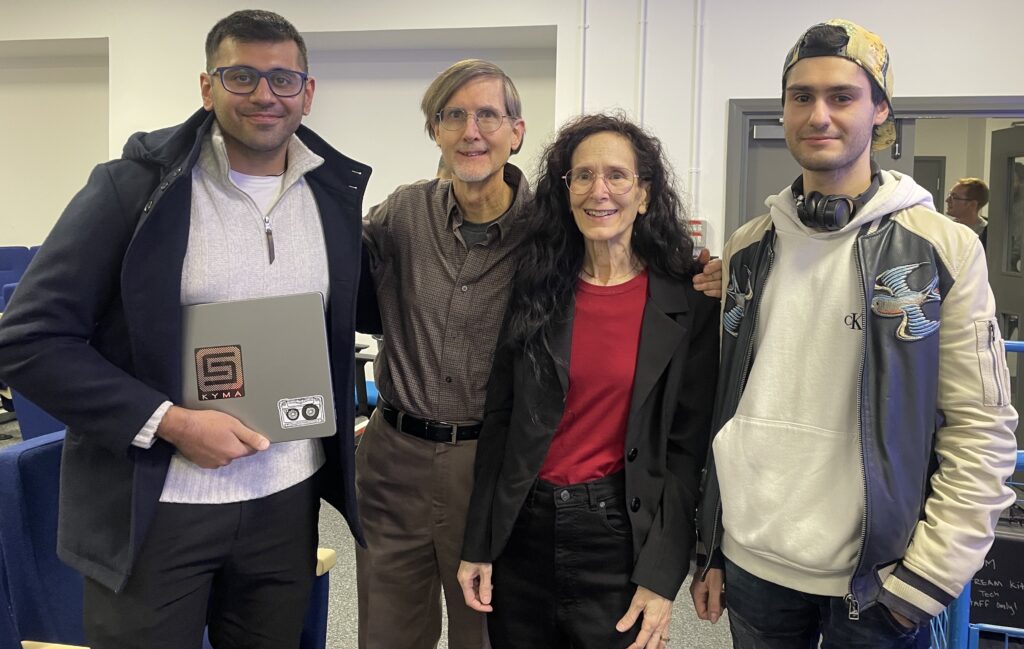

It seems that anywhere you look in the Townshend Studio, you see another rock legend. John Paul Jones (whose most recent live Kyma collaborations include Sons of Chipotle, Minibus Pimps, and Supersilent among others) recognized an old friend from across the room: a Yamaha GX-1 (1975), otherwise known as ‘The Dream Machine’ — the same model JPJ played when touring with Led Zeppelin and when recording the 1979 album “In Through The Out Door”. Yamaha’s first foray into synthesizers, only 10 were ever manufactured; it featured a ribbon controller and a keyboard that could also move laterally for vibrato. Other early adopters included ELP, Stevie Wonder and Abba.

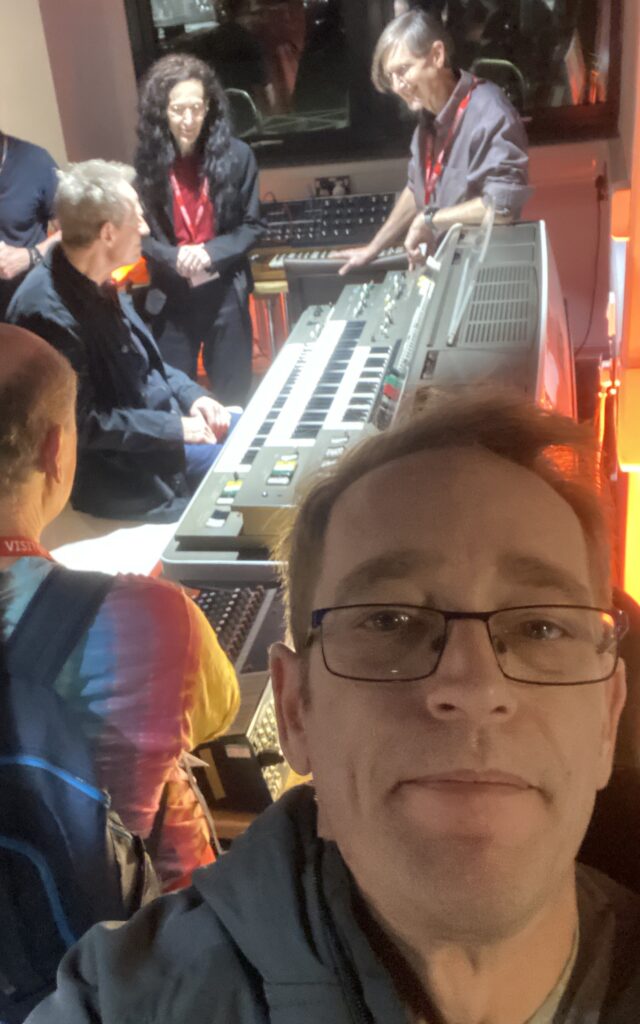
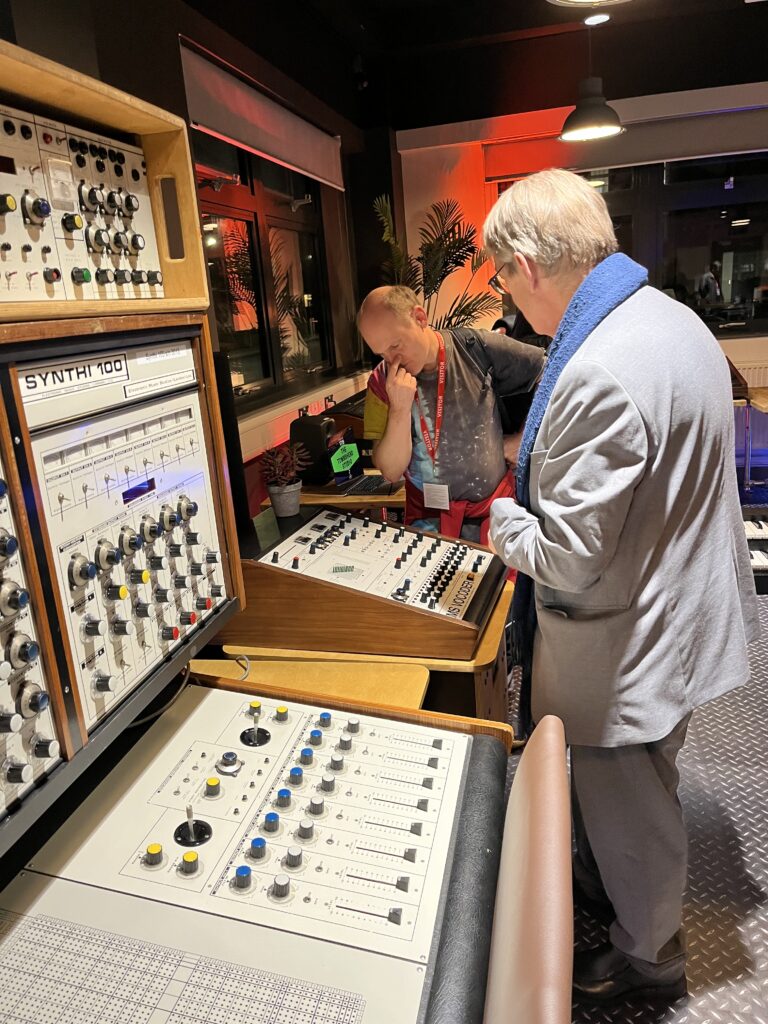
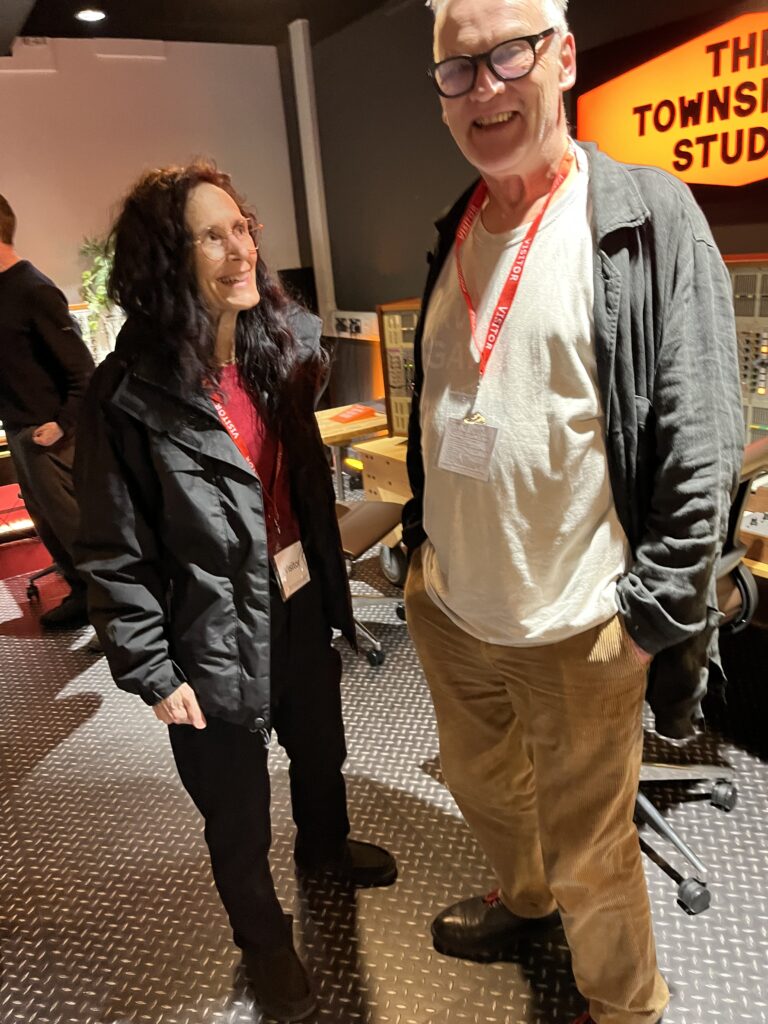
Carla Scaletti, creator of the Kyma language and co-founder of Symbolic Sound, was invited to present the closing keynote for the 2024 Audio Developer Conference in Bristol, UK on 13 November 2024.
Scaletti spoke about strategies for exploring the boundary between the known and the unknown through “recursive construction” and reminded software developers that the risky kinds of thinking required for creating something truly new are best supported by facing the unknown together.
She also touched on some of the design decisions behind the Kyma Sound (why it is a function, rather than a wiring diagram), the ways in which a user-interface defines an explorable universe of computable sound, the influence of programming languages on what you can imagine and create, and the co-evolution of the Kyma hardware and software.
An annual event celebrating all audio development technologies, from music applications and game audio to audio processing and embedded systems, ADC’s mission is to help attendees acquire and develop new skills, and build a network that will support their career development. It also showcases academic research and facilitates collaborations between research and industry. ADC will begin releasing videos of the ADC 2024 presentations on YouTube, beginning in 2025.
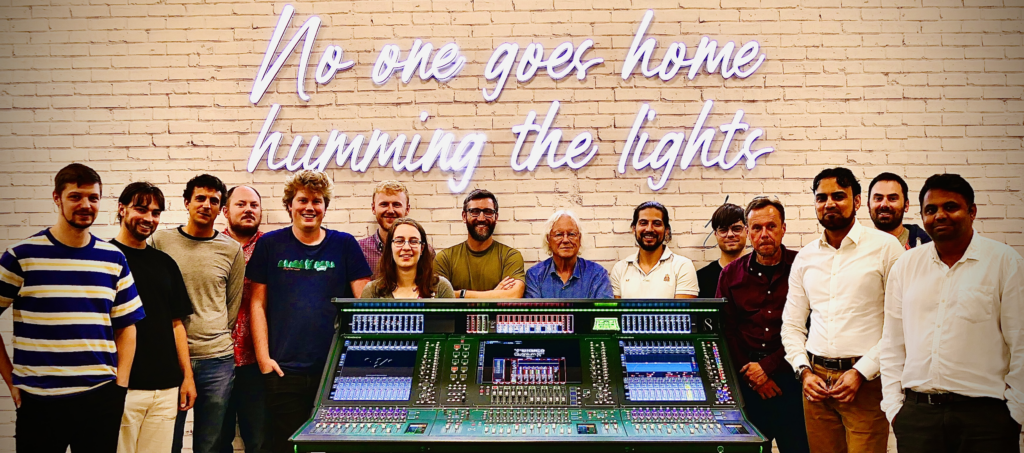
On Friday afternoon, 15 November 2024, Pete Johnston (software department) and Michael Aitchison (head of R&D) invited Carla Scaletti to present a seminar on sound synthesis for the R&D team at DiGiCo.
Following the lecture, Pete Johnston (who routinely prototypes and tests new signal processing algorithms in Kyma first before implementing them on the embedded processors in the live consoles) led the guests on a tour of DiGiCo’s testing facility and answered questions about the fully redundant, live fall-back dual consoles and the on-call 24/7 worldwide user support that DiGiCo provides for their live pro consoles.
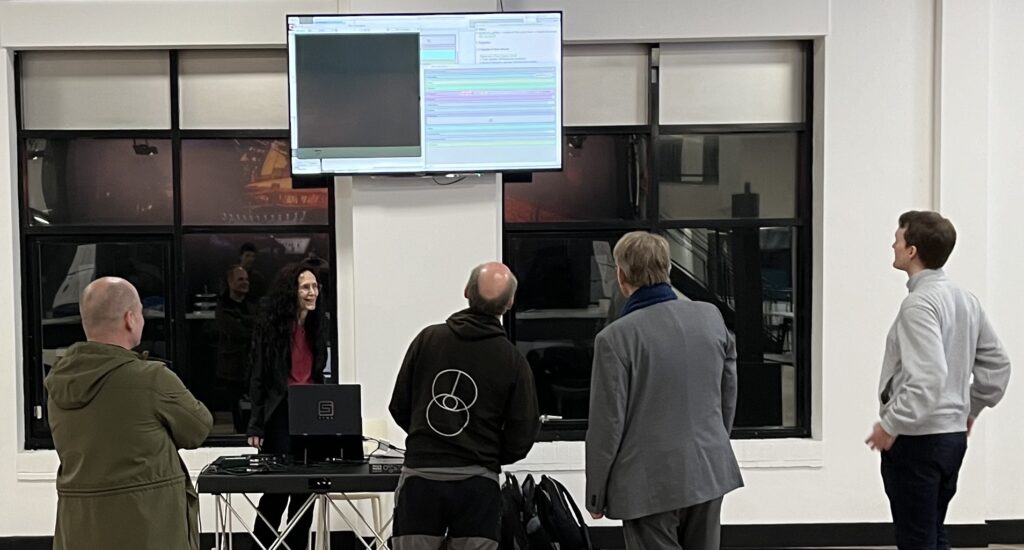
Franz Danksagmüller was in Waltershausen 25-28 August 2024 presenting workshops on how to integrate live electronics with the pipe organ. Here’s a photo of “the hand” controller designed by Franz, alongside an Emotiv EEG headband and Kyma Control.
Although from this vantage point, one might think that the organ loft is nearly paradisiacal…
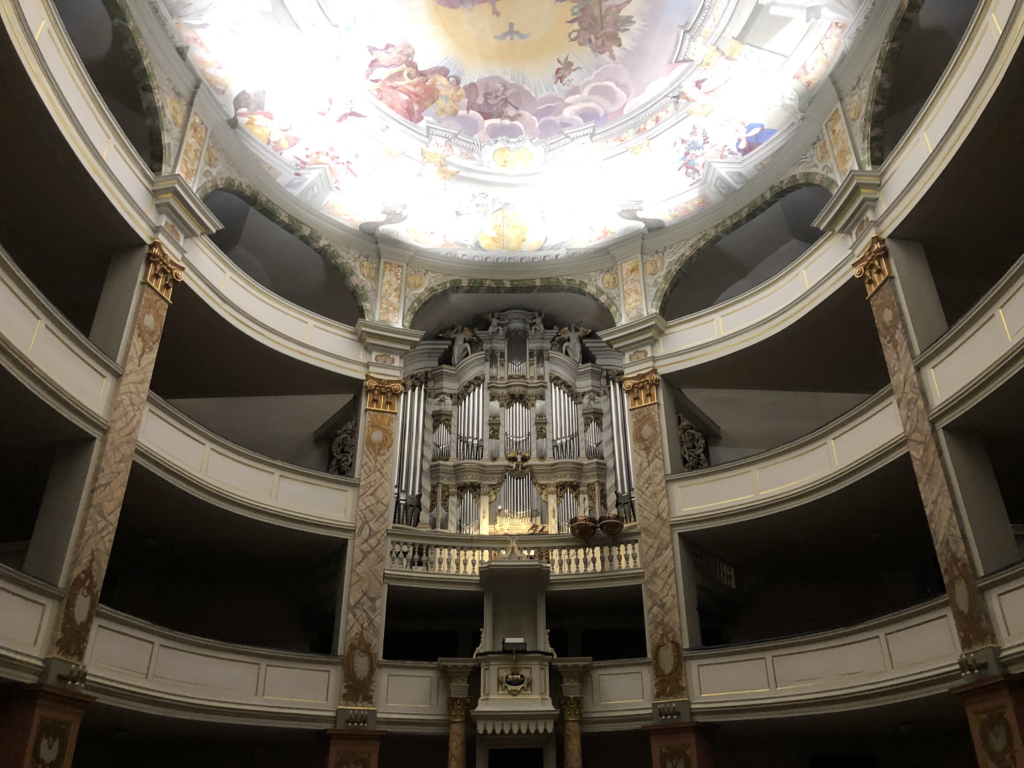
…the organ builder took pains to remind the organist of the alternative (or at the very least, to have a laugh).
César and Golden Reel Award-nominated film sound designer Samy Bardet, was invited to present a keynote lecture/demonstration in Paris on 15 June 2024 for the members of L’AFSI (Association Française du Son à l’Image)*. Sound editor, sound designer and composer, Bardet is renowned in the world of cinema for his aesthetic and innovative sound creations. He has also developed a reputation as a specialist in Kyma which he uses to create, transform, combine and interact with sound (and which he describes as “one of the best sound creation tools in the world”).
In his keynote, Bardet guided an audience of sound professionals through the various ways he uses Kyma to create sounds for films such as Babies, Persepolis, Mami Wata and Sébastien Vanicek’s Vermines, including the signal flow editor, the Timeline, the Multigrid, and spectral analysis/resynthesis tools. One of the most important parts of the keynote, according to Bardet, were the live demonstrations of how one can use the Haken Continuum, iPad and Wacom Tablet as interactive sound design controllers.
Bardet describes Kyma as a language, an instrument that one can learn to play and to master. Each user will develop a different interpretation and this is what makes Kyma unique!
Le Kyma est un langage, un instrument qu’il faut apprendre à jouer, maîtriser. Chaque utilisateur aura une interprétation différente et c’est ce qui fait que le Kyma est unique!
 Bardet concluded with a list of some practical benefits of working with Kyma, including:
Bardet concluded with a list of some practical benefits of working with Kyma, including:
Through his atelier, SYMA: sound design, Bardet has worked with contemporary artist Laurent Grasso on several exhibitions (for example Uraniborg at the Musée du Jeu de Paume and Soleil Double atthe Perrotin gallery, in Paris. He collaborated on installations at the Musée des Confluences in Lyon for the Antartica and Terra Incognita exhibitions by Luc Jacquet, and has done sound design for augmented reality in collaboration with The Overlap Factory.
Here, he is pictured during the final mix for the 2017 film To the Top:
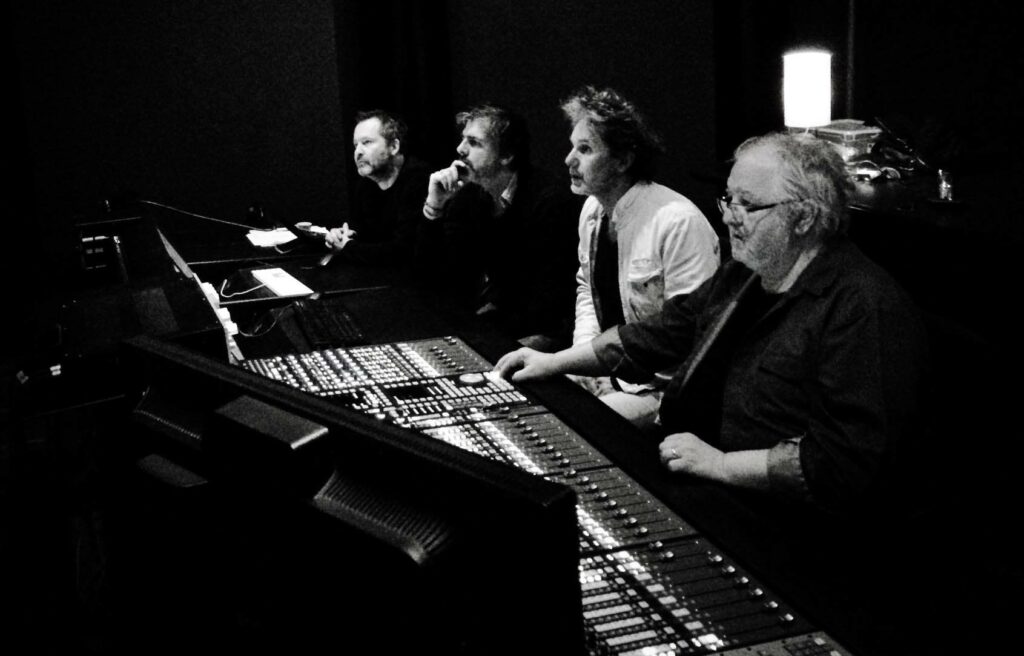
* L’AFSI (Association Française du Son à l’Image) is a professional organization whose aim is to develop relationships, exchange information, discuss methods, contribute to solving common problems, monitor technological progress, and organize meetings to highlight and communicate the importance of the creative and technical contribution of sound professionals in film audiovisual production, and related media.